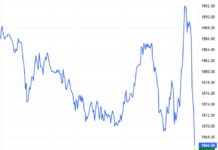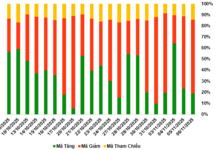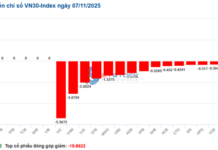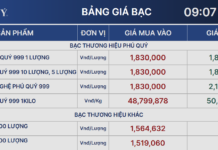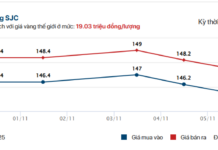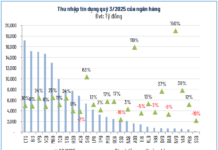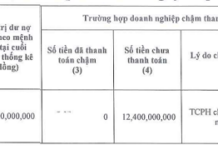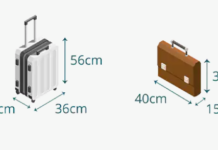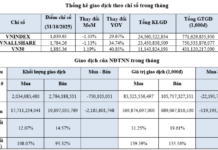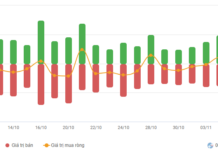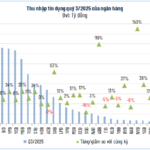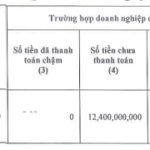According to the data provided by the General Department of Customs, in March 2024, Vietnam’s rice exports reached 1.12 million tons, earning 709.6 million USD; an increase of 99.7% in volume and 90% in value compared to February 2024.
In the first 3 months of 2024, rice exports reached over 2.18 million tons, with a value of nearly 1.43 billion USD; an increase of 17.6% in volume and 45.5% in value compared to the first 3 months of 2023.
RICE EXPORT PROMISES TO SET A NEW RECORD
The Philippines was the largest export market for Vietnamese rice in the first 3 months of 2024, reaching over 1.01 million tons, equivalent to nearly 649 million USD, accounting for 46.4% of the total volume and 45.5% of the total value of the country’s rice exports. The export price to this market reached 641.7 USD/ton, an increase of 27.3% compared to the first 3 months of 2023.
Rice exports to Indonesia ranked second, with a strong increase of 199.7% in volume, 308.8% in value, and 36.4% in price, with 445,326 tons, equivalent to 285.06 million USD. The export price reached 640 USD/ton.
Next, rice exports to the Malaysian market increased by 28.8% in volume, 60.6% in value, reaching 98,917 tons, equivalent to 61.55 million USD, with an average price of 622.3 USD/ton.
“The average export rice price in the first quarter of 2024 was 653.9 USD/ton, an increase of 23.6% compared to the same period last year”.
According to the General Department of Customs.
According to the Vietnam Food Association, rice export prices in March 2024 and the first half of April 2024 decreased compared to rice export prices in the first two months of the year. On April 1, the export price of 5% broken rice from Vietnam decreased to 582 USD/ton, which is 11 USD/ton and 23 USD/ton lower than similar rice from Thailand and Pakistan, respectively. On the contrary, the export price of 25% broken rice from our country reached 558 USD/ton, which is 9 USD/ton higher than the same type of rice from Thailand and equal to the rice price from Pakistan.
As of April 15, 2024, the export price of 5% broken rice is currently at 578 USD/ton; while that of 25% broken rice is at 549 USD/ton.
Explaining the decrease in rice export prices, the Vietnam Food Association stated that the price of Vietnamese rice has decreased in the period according to the natural law as major rice-producing countries are entering the main harvest season, and the import demand is not as high as before. In particular, our country is also in the winter-spring harvest, and the abundant supply of rice in the market will naturally lead to a decrease in domestic and export prices.
For the domestic market, the price of IR 504 raw rice is currently around 11,200 – 11,300 VND/kg. In Can Tho and An Giang, farmers are currently starting to sell summer-autumn rice.
According to the updated data from the Department of Agriculture and Rural Development of An Giang province, the price of OM 18 rice is around 7,800 – 8,000 VND/kg; OM 5451 is around 7,600 – 7,700 VND/kg; fresh Long An glutinous rice is 7,800 – 8,000 VND/kg; fragrant Dai Thom 8 rice is around 7,700 – 8,000 VND/kg; IR 504 is around 7,200 – 7,300 VND/kg; Nang Hoa 9 rice is around 7,500 – 7,700 VND/kg; and OM 380 rice is stable at around 7,500 – 7,600 VND/kg.
Assessing the rice market in the second quarter, the Vietnam Food Association said that world rice prices as well as Vietnam’s rice exports will remain high. The global rice supply is still tight due to unfavorable weather conditions, forcing many major supplier countries to ban and restrict exports.
The El Niño weather phenomenon, which caused drought in many large areas in Asia in 2023, is projected to continue in the first half of 2024. Analysts are currently making predictions suggesting that Asia’s rice production in the first half of 2024 will continue to decline due to dry growing conditions. This will further increase the import demand to ensure food security in many markets.
Meanwhile, India, the world’s largest rice exporter, has not yet lifted the ban on white rice exports since the middle of last year; Thailand, the second largest rice exporter, also announced that it will cut rice exports to ensure domestic food security.
On the other hand, political conflicts in the Middle East are also causing disruptions to the global supply chain, with logistics costs and transportation time increasing significantly.
The US Department of Agriculture (USDA) forecasts that global rice consumption in the 2023-2024 crop year will reach a record 522.9 million tons, an increase of 2.7 million tons compared to the previous crop year and 7.5 million tons higher than the total harvested output.
ST24 AND ST25 RICE STILL NOT ELIGIBLE FOR TARIFF PREFERENCES
Regarding rice, the International Cooperation Department (Ministry of Agriculture and Rural Development) has just issued Official Letter No. 205/HTQT-HNĐT providing information about the list of fragrant rice entering the EU market.
Accordingly, according to information from the Vietnamese Trade Office in Belgium, there are currently a number of enterprises exporting rice to the EU reflecting that ST24 and ST25 rice of enterprises when imported into the EU have not yet enjoyed tariff preferences as reported in the press.
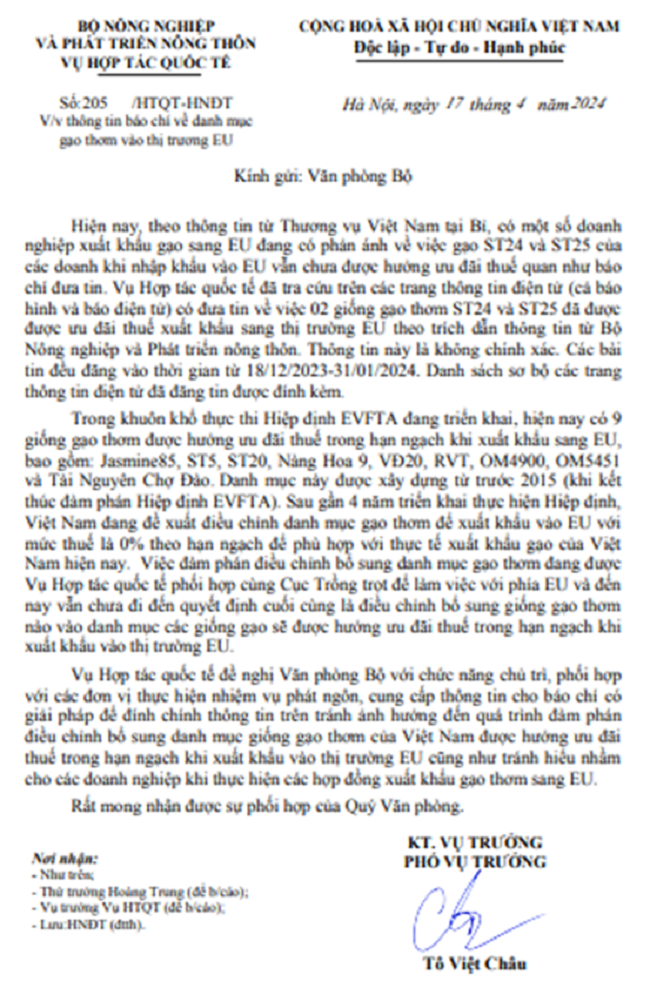
The International Cooperation Department has searched on electronic information pages (both visual and electronic newspapers) that reported that the two fragrant rice varieties ST24 and ST25 have been given preferential export tariffs to the EU market, as quoted from the Ministry of Agriculture and Rural Development. This information is incorrect. The news articles were all published between December 18, 2023, and January 31, 2024. A preliminary list of the electronic information pages that published the news is attached.
According to the International Cooperation Department, under the implementation of the Free Trade Agreement between Vietnam and the EU (EVFTA), there are currently 9 fragrant rice varieties that enjoy tariff preferences within the quota when exported to the EU, including: Jasmine85, ST5, ST20, Nang Hoa 9, VĐ20, RVT, OM4900, OM5451, and Tai Nguyen Cho Dao.
This list was developed before 2015 (when the EVFTA negotiations were concluded). After nearly 4 years of implementing the Agreement, Vietnam is proposing to adjust the list of fragrant rice for export to the EU with a 0% tariff within the quota to suit the current rice export situation of Vietnam.
“The negotiation to adjust and supplement the list of fragrant rice is being coordinated by the International Cooperation Department and the Department of Cultivation to work with the EU and so far, no final decision has been made on which fragrant rice varieties will be added to the list of rice varieties that will enjoy tariff preferences within the quota when exported to the EU market,” the International Cooperation Department’s Official Letter emphasized.
The International Cooperation Department requests that the Office of the Ministry of Agriculture and Rural Development, with the

